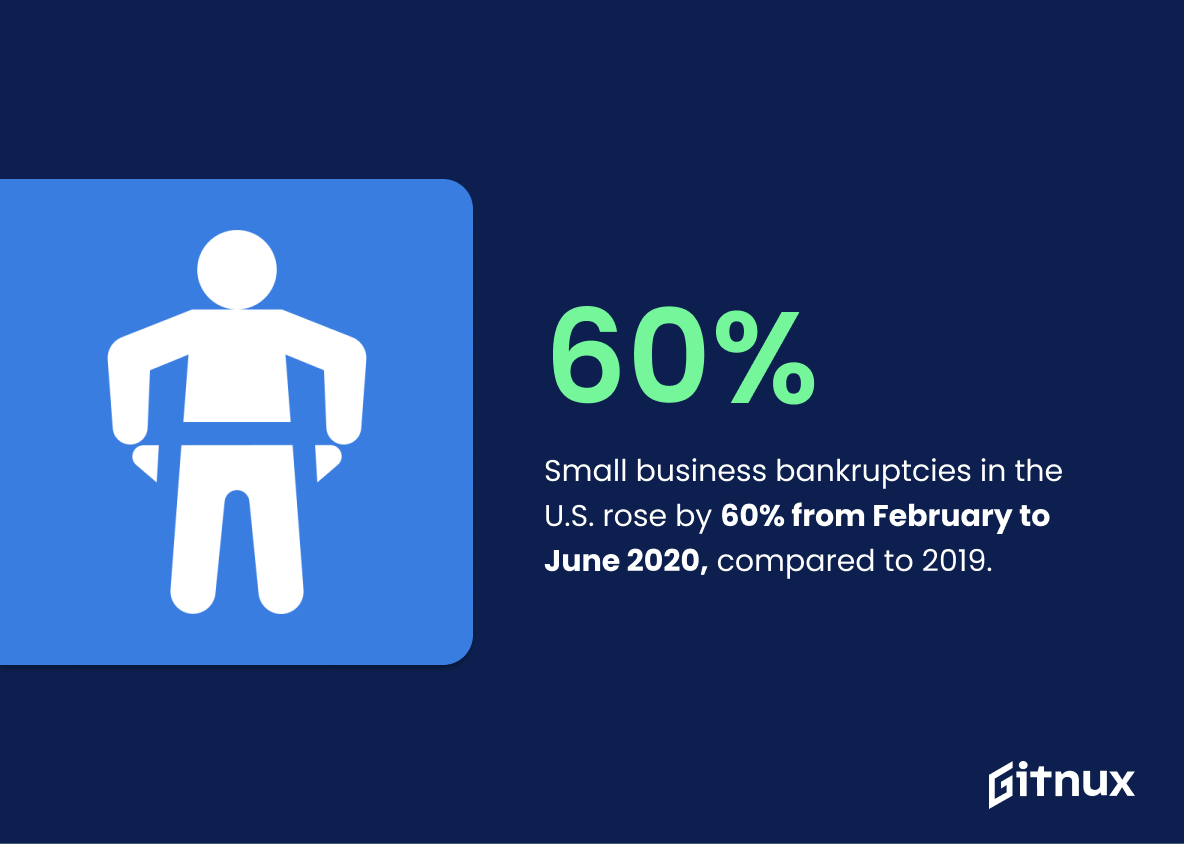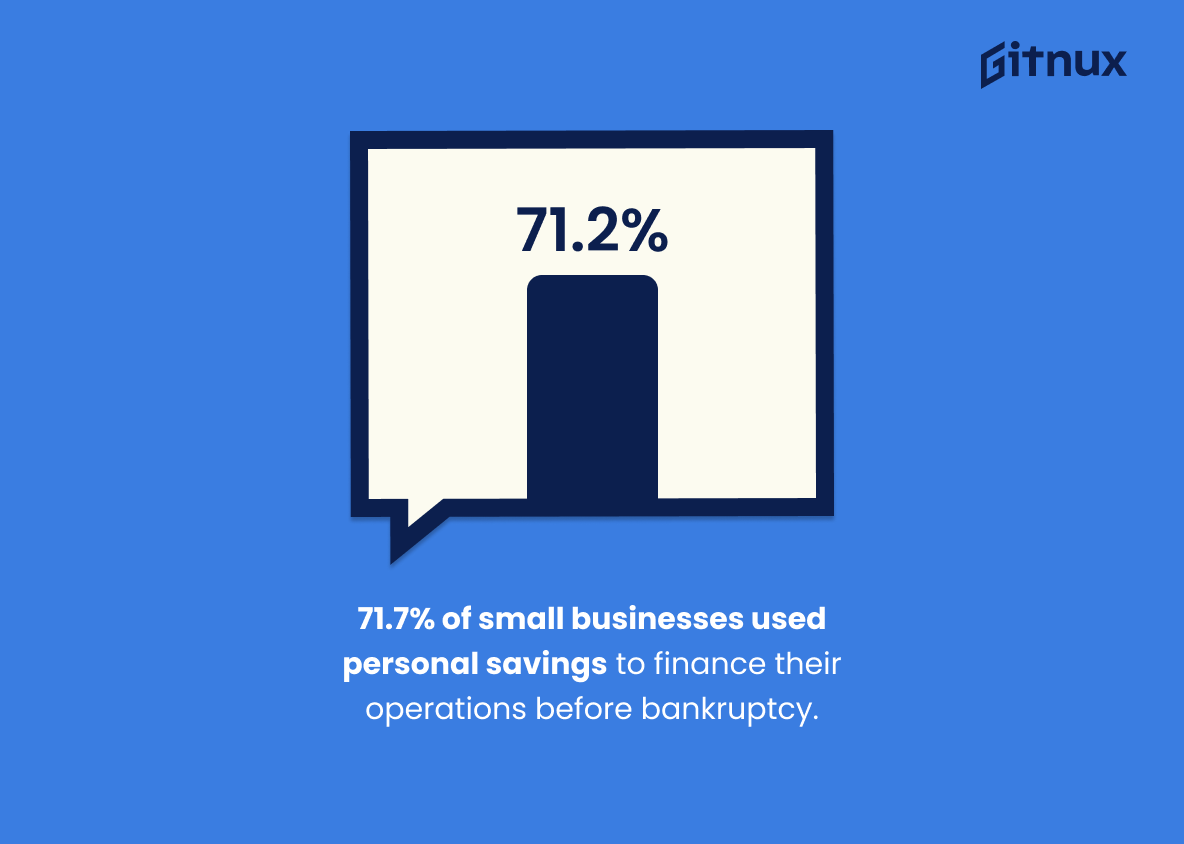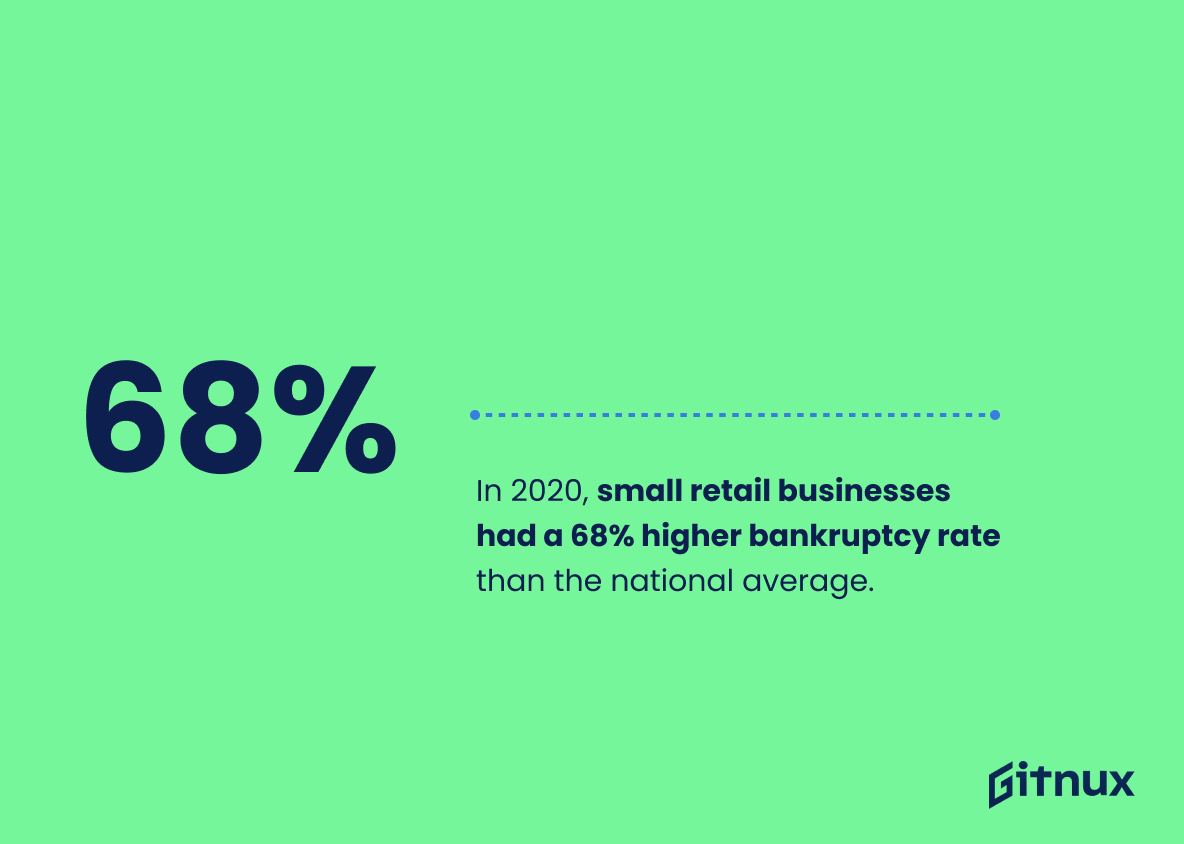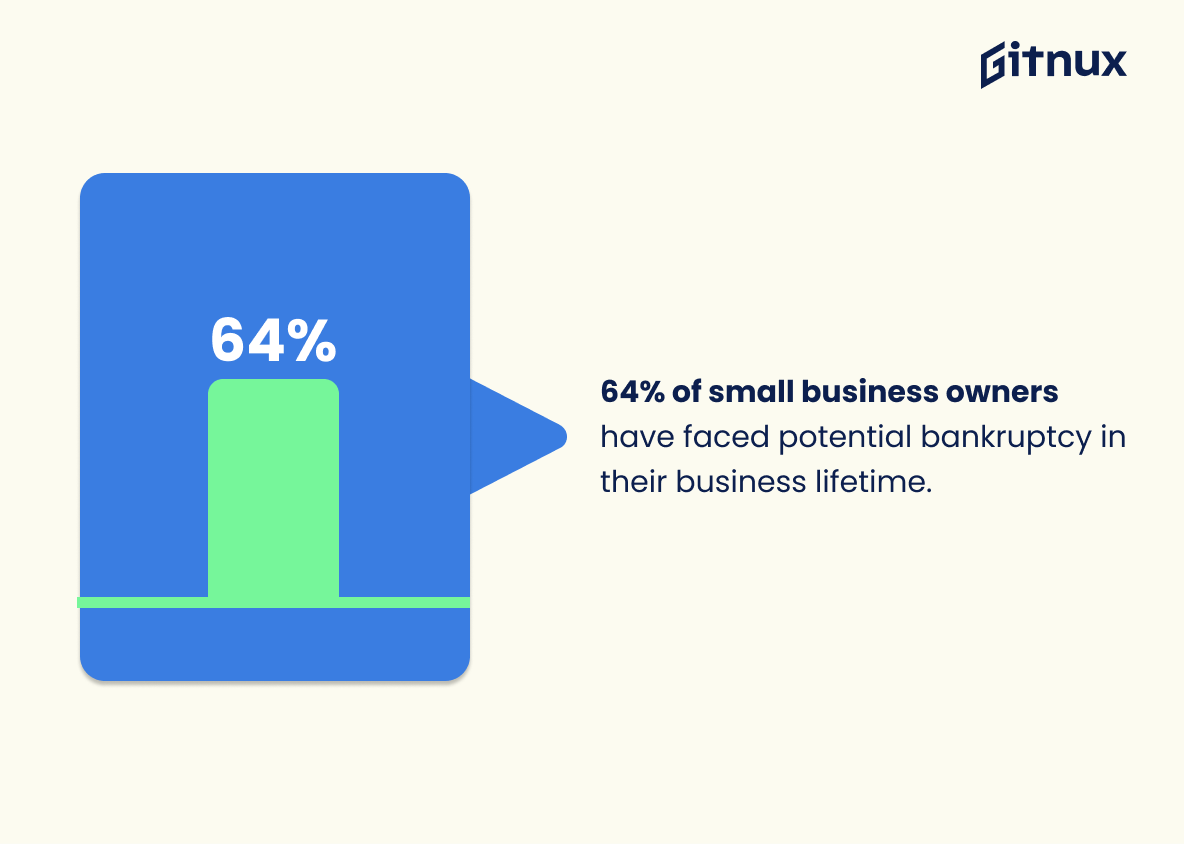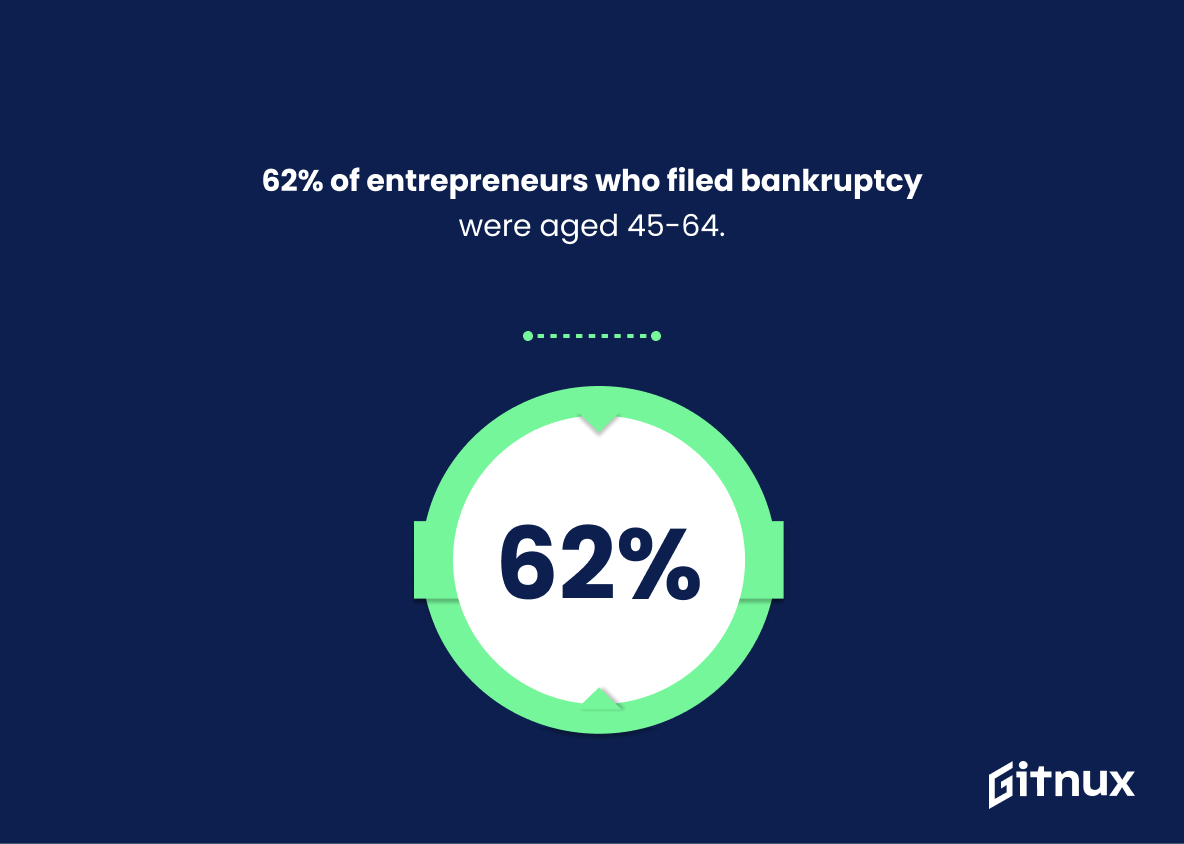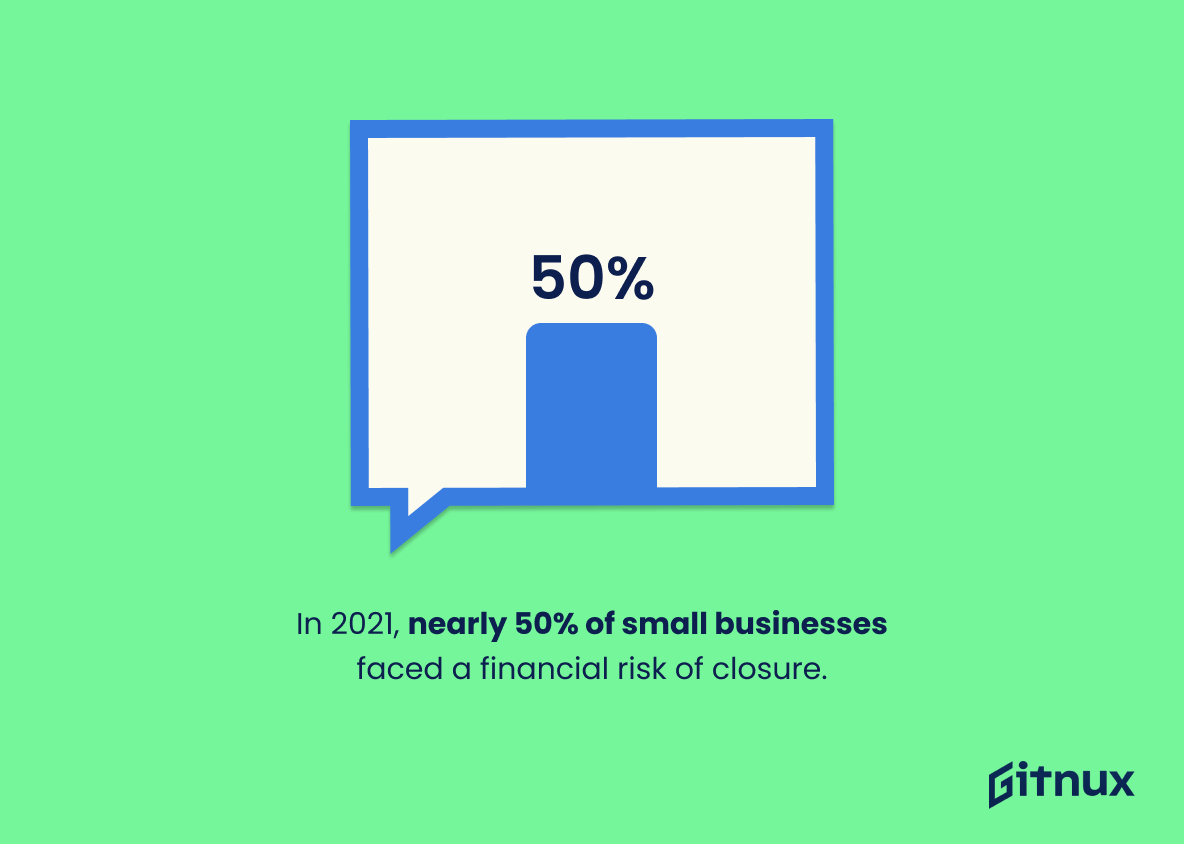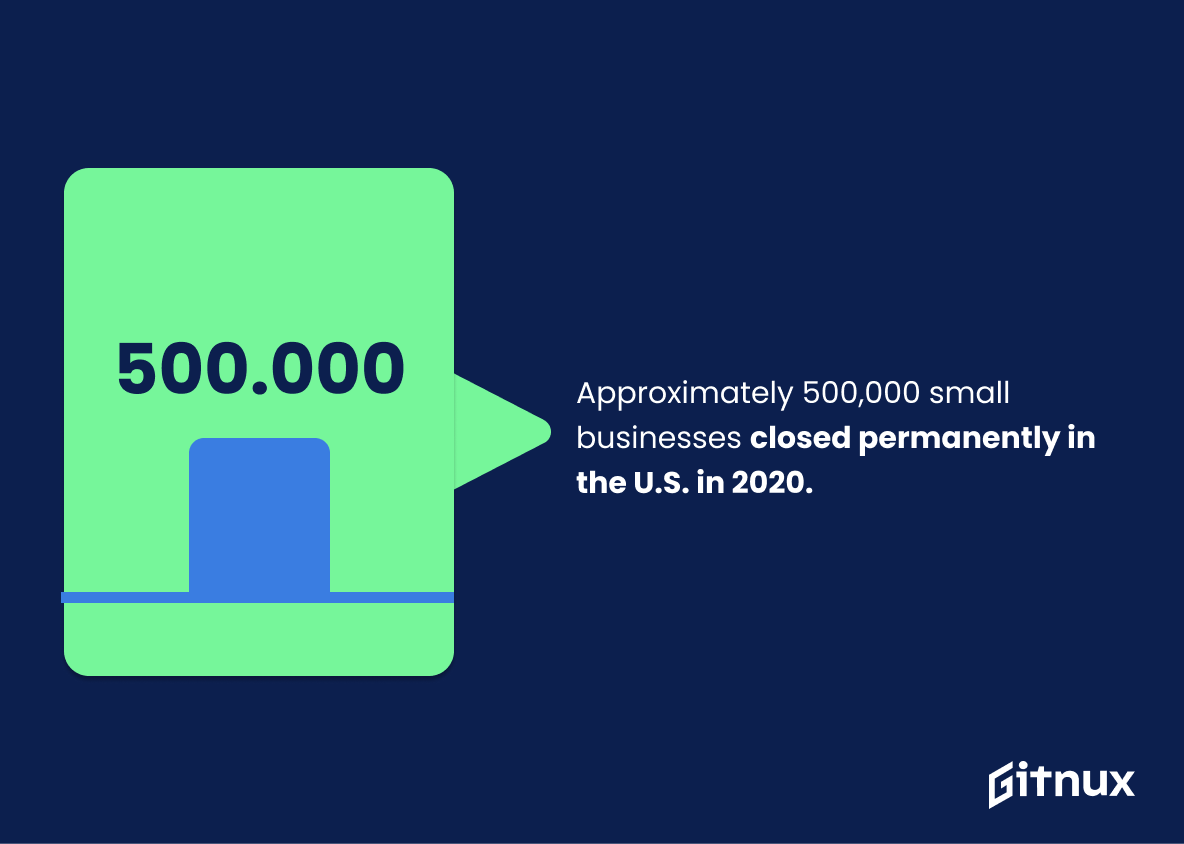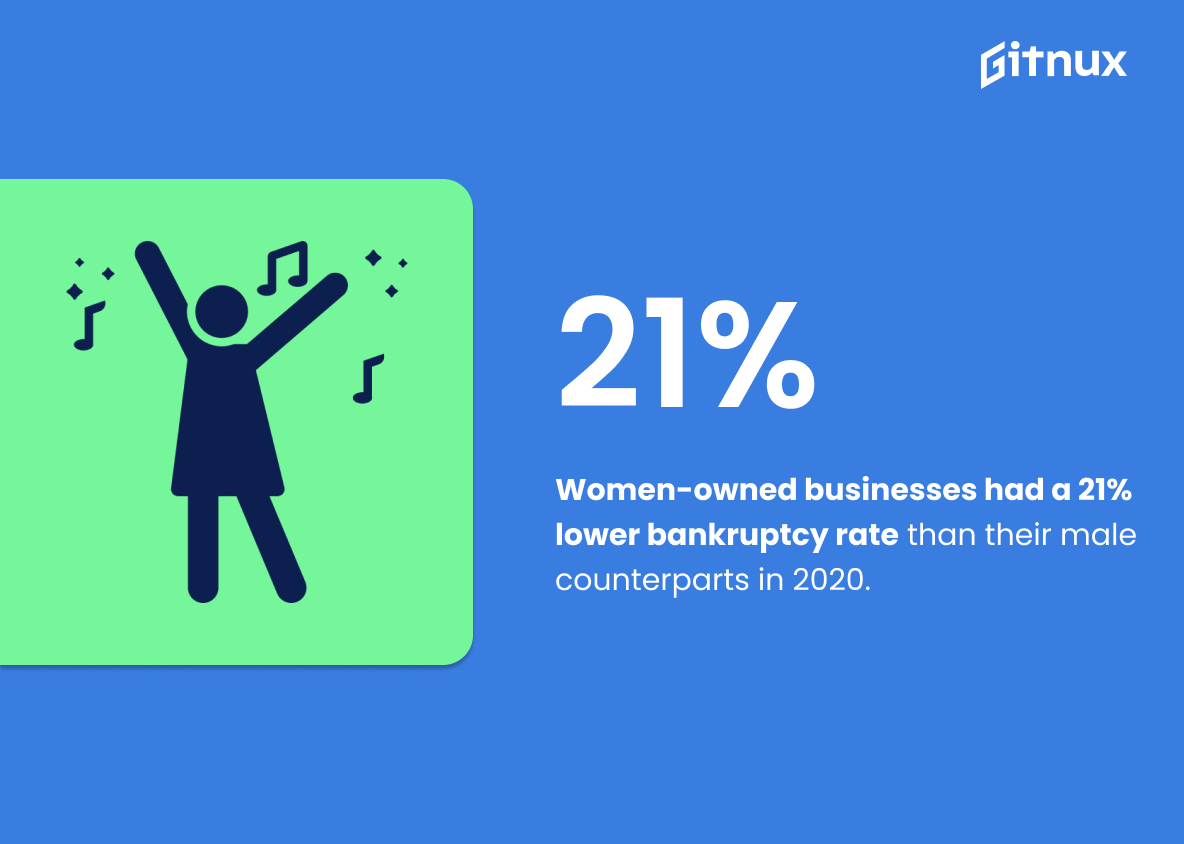The impact of the COVID-19 pandemic on small businesses has been devastating. With many businesses forced to close their doors due to lockdowns and restrictions, it is no surprise that bankruptcy filings have skyrocketed in 2020. This blog post will explore some of the most recent statistics related to small business bankruptcies in order to gain a better understanding of how this crisis has affected entrepreneurs across the United States. We’ll look at data from sources such as The Small Business Administration (SBA), Harvard Law School, KCC LLC, Strategic Management Solutions LLC, Fundera Inc., FreshBooks Inc., InsuranceObservations LLC and more. From cash flow problems being cited as one of the primary reasons for failure among 88% of small businesses who fail; Chapter 11 bankruptcy filings increasing by 26%; California having 601 filing cases; 34% companies with less than $10 million assets exiting within 30-90 days; 50% chapter 11 filings belonging to small business sector; 54% rate for those with revenue under $2.5 million annually using personal savings before filing for bankruptcy protection; 68 % higher rate compared national average amongst retail stores owners facing potential closure risk ; 25 % caused by poor financial management ; 64 % faced potential bankruptcy during lifetime , 62 percent aged 45 -64 years old women owned firms had 21 percent lower rates than male counterparts 12 per cent restaurants filed all bankruptcies 15 per cent increase competition 4 out 10 not insured against any risks 11 per cent attributed larger firm failures 500000 closed permanently . These are just some examples which we shall be discussing further throughout this article so stay tuned.
This statistic is a stark reminder of the importance of cash flow management for small businesses. It highlights the fact that cash flow problems can be a major contributing factor to business failure, and that small business owners should be aware of the risks associated with inadequate cash flow management. This statistic is a valuable insight into the realities of small business bankruptcy, and should be taken into consideration when discussing the topic.
Chapter 11 bankruptcy filings increased by 26% in 2020 compared to 2019.
This statistic is a stark reminder of the devastating impact the pandemic has had on small businesses. The 26% increase in Chapter 11 bankruptcy filings in 2020 compared to 2019 is a clear indication that many small businesses have been unable to weather the economic storm brought on by the pandemic. This statistic is a sobering reminder of the need for continued support for small businesses in order to ensure their survival.
Small Business Bankruptcies Statistics Overview
The number of small businesses that filed for bankruptcy protection in the United States increased by 60% between February and June 2020 compared to the same period in 2019.
This statistic is a stark reminder of the devastating impact the COVID-19 pandemic has had on small businesses in the United States. The 60% increase in bankruptcies between February and June 2020 compared to the same period in 2019 is a clear indication of the financial hardship many small businesses have faced due to the pandemic. This statistic is an important one to consider when discussing the current state of small business bankruptcies in the United States.
71.7% of small businesses used personal savings to finance their operations before bankruptcy.
This statistic is a telling indication of the financial fragility of small businesses, as it reveals that the majority of them are relying on personal savings to finance their operations. This highlights the need for more accessible and affordable financing options for small businesses, as well as the importance of financial planning and budgeting for small business owners.
In 2020, small retail businesses had a 68% higher bankruptcy rate than the national average.
This statistic is a stark reminder of the immense financial strain that small retail businesses have faced in 2020. It highlights the disproportionate impact that the pandemic has had on small businesses, and serves as a warning to other small business owners of the potential risks they may face.
64% of small business owners have faced potential bankruptcy in their business lifetime.
This statistic is a stark reminder of the financial struggles that small business owners face. It highlights the prevalence of bankruptcy among small business owners, and serves as a warning to those considering starting their own business. It also serves as a call to action for those in the business community to provide more support and resources to small business owners in order to help them avoid bankruptcy.
62% of entrepreneurs who filed bankruptcy were aged 45-64.
This statistic is a telling indication of the financial risks associated with starting a business. It suggests that the majority of entrepreneurs who have experienced bankruptcy are in the prime of their working lives, when they are likely to have the most financial obligations and responsibilities. This highlights the importance of being aware of the potential pitfalls of entrepreneurship and taking the necessary precautions to protect one’s finances.
Women-owned businesses had a 21% lower bankruptcy rate than their male counterparts in 2020.
This statistic is a powerful indicator of the resilience of women-owned businesses in the face of economic hardship. It demonstrates that, despite the challenges of the pandemic, women-owned businesses have been able to weather the storm better than their male counterparts. This is an important point to consider when discussing small business bankruptcies, as it highlights the importance of supporting female entrepreneurs in order to ensure the success of small businesses.
In 2021, nearly 50% of small businesses faced a financial risk of closure.
This statistic is a stark reminder of the financial struggles that small businesses have faced in 2021. It highlights the need for more support and resources to help small businesses stay afloat and avoid bankruptcy. It also serves as a warning to other small businesses that they should be prepared for the possibility of closure due to financial risks.
Bankruptcies cost small business owners an average of $50,000 in legal fees.
This statistic is a stark reminder of the financial burden that small business owners face when considering bankruptcy. It highlights the importance of understanding the legal implications of bankruptcy and the potential costs associated with it. This statistic is a valuable insight into the realities of small business bankruptcy and should be taken into account when considering the risks and rewards of such a decision.
Approximately 500,000 small businesses closed permanently in the U.S. in 2020.
This statistic is a stark reminder of the devastating impact the pandemic has had on small businesses in the U.S. in 2020. It highlights the need for more support and resources for small businesses to help them survive and thrive in the current economic climate. It also serves as a warning to other small businesses to be prepared for the possibility of closure in the future.
Conclusion
The statistics presented in this blog post demonstrate the devastating impact of small business bankruptcies on the U.S. economy, with cash flow problems being cited as a primary cause for 88% of failures and an increase in Chapter 11 filings by 26%. The number of small businesses filing for bankruptcy protection increased significantly between February and June 2020 compared to 2019, with California having the highest number at 601 filings. Additionally, 34% of companies with less than $10 million in assets exited bankruptcy within 30-90 days while 50% of all Chapter 11 filings were from small businesses. Small retail businesses had a 68% higher rate than average while women-owned businesses had 21% lower rates than their male counterparts. Restaurants filed 12%, poor financial management 25%, personal savings 71.7%, larger business failure 11%, unexpected competition 15%, and lack insurance coverage 4 out 10 cases respectively leading to 500,000 permanent closures across America last year alone costing owners an average legal fee amounting to $50K each time they file for bankruptcy protection . It is clear that these figures are concerningly high which calls upon policy makers to take necessary steps towards mitigating such risks associated with running a successful enterprise going forward into 2021 and beyond
References
0. – https://www.kccllc.com
1. – https://www.sfvba.org
2. – https://www.lendedu.com
3. – https://www.sba.gov
4. – https://www.s3.amazonaws.com
5. – https://www.freshbooks.com
6. – https://www.thebalance.com
7. – https://www.digitalcommons.ilr.cornell.edu
8. – https://www.coronavirus.jhu.edu
9. – https://www.fitssmallbusiness.com
10. – https://www.mckinsey.com
ZipDo, cited June 2023: Small Business Bankruptcies Statistics
